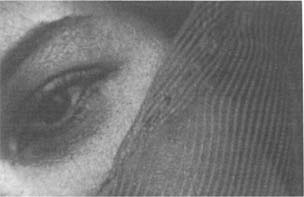
Topics in Photographic Preservation 1997, Volume 7, Article 10 (pp. 73-87)
Rachel A. Mustalish is the Morse Fellow for Advanced Training in Paper Conservation, Museum of Fine Arts, Boston
In the last quarter of the nineteenth century the demand for high quality photographic images that were accurate, permanent, and inexpensive spurred the expansion of photomechanical printing processes. The term photomechanical implies that an image is generated photographically, yet whose final print is ink on paper (not a photosensitive material) theoretically without the need for artistic translation or manipulation.
In the printing industry, the period of 1865 to 1900 is particularly interesting because of a succession of rapid technological changes. Many processes were invented and used, but little or no standardization was established. During this time technological innovations in many areas of mass production including paper making, metallurgy, ink and dye manufacture, and automated presses led to a great availability of options for image creation.
Mechanized mass production in all areas of industry in the nineteenth century significantly decreased the cost of many consumer items. In addition the resumption of peace, the expansion of the rail system, lower postal rates, new subscription systems, club plans, and direct selling in the United States allowed goods to reach many areas.1 These factors, combined with economic growth and increases in immigration, created a much larger consumer base.2 This led to changes in attitudes toward mass produced images, their availability, expected appearance, and quality.
In this period lithography, photography, and the subsequent photomechanical processes evolved. These were manipulated, improved, and used to create myriad techniques that were used in fine art, art reproduction, book illustration, and other visual materials.
The 1870s witnessed a period of change. In addition to the increased availability of goods, public exposure to lithography, chromolithography and photography fostered and exploited the desire for images. Chromolithographs were still selling by the millions but “familiarity breeds contempt”3 and they were rapidly becoming thought of as a lower class item for popular consumption. In addition, the number of lithographic firms grew and the technique was employed in packaging and advertising, furthering its reputation as a cheap process.
Wood-engraving was another dominant method for illustration. These reproductions were described as an “equally exact but artistic rendering”4 of a work of art. However, they were increasingly being criticized for this “artistic” quality. Photographically produced images, described as “absolutely exact mechanical rendering[s],”5 of works were becoming favored. Wood-engraving remained nonetheless the dominant method for illustrating newspapers and books for a long time.
This was because the industry (craftsmen, artists, pressmen, presses, inks, paper, etc.) was set up for wood-engraving production; therefore it was more cost-effective to continue using this process. However, for art reproduction - a smaller field - the demands for certain standards in image production allowed for the shifts in aesthetics and changes in technology that took place.
Lithographs and wood-engravings, once thought to be wonderful reproductions of works of art, were increasingly being viewed as imitations - translations that were inaccurate or false. This shift of taste from the imitative to the real was fostered by and responsible for changes in printing technology. This craving for verisimilitude in the last quarter of the nineteenth century6 combined with scientific and technological advances was essential in the development of photomechanical processes for art and industry. The number of processes developed in this period is staggering and the nomenclature of the innumerable processes was unsystematic, often complicating discussion and identification of techniques. This paper will discuss a few of the principle processes, benchmarks in the developing technology, that were critical in changing how reproduction processes were viewed.
The ability to produce line work (only black and white) occurred early on,7 however the creation of tonal images (to simulate the continuous tones of true photographs) was more difficult and proved to be the challenge of photomechanical technology. Although there were some unique approaches to producing photomechanical prints, most techniques relied on the ability of gelatin (or other substances such as albumen, glue, or gum) to become sensitive to light when combined with bichromate.8 The role that the sensitized gelatin played in printing processes can be categorized into three groups: gelatin as template, gelatin as printing surface, and gelatin as resist in metal plate etching.
One of the first photomechanical techniques was the Woodburytype, introduced in 1865 by Walter Bentley Woodbury.9 Chromated gelatin was exposed under a transparent positive. The areas that were exposed hardened and the protected areas remained soluble and were removed with warm water after exposure. This created a profile in the gelatin that corresponded to the tones in the positive. The resulting relief in the gelatin was used as a template to create a lead mold. The mold was then filled with pigmented gelatin (confusingly often referred to as ink) and printed onto paper. Tremendous pressure was required to make these prints; therefore special presses were required. In addition the pigmented gelatin tended to ooze and made it necessary to trim and remount the prints. For these reasons this technique was not suitable for oversize images or pictures with large areas of white. However, as can seen from the detail of a Woodburytype from 1896 (Figure 1) the resulting images were truly continuous in tone. These prints were subject to gelatin deterioration particularly in the darks where the gelatin was thickest but they were not susceptible to image deterioration characteristic of gelatin silver prints because the colorant was a stable pigment, usually carbon black. This technique was used into the early twentieth century, particularly in art reproduction, although manufacturing constraints made it less useful in high quantity reproductions.

Figure 1 Woodburytype, detail (6x). Miss St. Cyr, 1896. Waterlow and Sons, Ltd from a negative by Elliot and Fry in The Process Yearbook for 1896. London: Penrose and Company, 1896. William Morris Hunt Memorial Library. Museum of Fine Arts, Boston.
Another technology that used chromated gelatin as a template for a metal printing base was the photogalvanic process (Figure 2), first patented in 1854 by Paul Pretsch.10 In this process the gelatin relief was electroplated to form a printing plate. As with the early etching processes electroplating of a gelatin relief could produce line work; however, when electroplating was applied to tonal images there was a loss of detail and subtlety of tone. The plate almost always required retouching and never had commercial success for tonal images.

Figure 2 Photogalvanograph. Robert Fenton, English, 1819–1869. Cedars-Monmouthshire, 1860. Anonymous loan to Museum of Fine Arts, Boston. T. 189.2.1989
Another group of processes used the gelatin itself as the printing base. All processes based on this are generally termed collotype (after kolla the Greek word for glue). This technology began in 1855 when Alphonse Poitevin patented a gelatin based printing process called helioplastie11 and a mechanism for adhering thin layers of gelatin to glass. After exposure of the sensitized gelatin, unlike the Woodburytype, the unexposed and therefore still soluble gelatin was not removed and both the chemical and physical properties of the differentially exposed gelatin were exploited. Exposure to light not only hardened the gelatin but caused it to become increasingly hydrophobic. Thus like the lithographic process, the exposed gelatin was able to pick up oily lithographic ink whereas the unexposed areas remained hydrophilic and repelled the printing ink. For this reason many of the processes derived from this are also called photolithography, a term that is generally applied to any photomechanical process that produces uniform ink layers via lithographic chemistry. Unlike the Woodburytypes which achieved tonality by having a variation in the depth of the ink, processes that print with a uniform ink depth depend upon a grain to create tone. Thin sheets of gelatin were processed so that a reticulated surface resulted and the amount of reticulation left on the surface after exposure corresponded to the amount of light the gelatin received, thus creating a grain. Gelatin naturally produces a very fine and random grain on the printing surface.
Figure 3 is a detail of a collotype from 1934 which show the reticulation (the small circular features) produced by the gelatin. The results were beautiful, rich tonal pictures. However, because the printing surface was gelatin, a somewhat fragile material, the number of good prints obtainable was limited. Despite this limitation a rotary collotype press (for higher quantity production) was invented in 1873.12 Collotypes remained unsurpassed in creating tonal quality and therefore remained the premier process for art reproduction until the 1880s and was frequently used well into the twentieth century. Many minor modifications of this process were made and often given different proprietary names. Two that were well known in the United States were Albertype and Autotype. One successful variant was called the Heliotype.
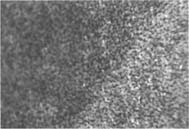
Figure 3: Collotype, detail (12x), 1934. In Curwen, Harold. Processes of Graphic Reproduction in Printing. London: Faber and Faber, 1934. William Morris Hunt Memorial Library. Museum of Fine Arts, Boston.
Heliotypes were introduced in the United States in the early 1870s by Ernest Edwards. They were produced in the same manner as collotypes, but the gelatin used was five times thicker and treated with alum to further harden the gelatin, thereby making it less delicate and able to withstand more handling and more printings. In Edwards' description of the process he noted that the gelatin layer was removed from a solid support and squeegeed into intimate contact with the negative to achieve a very crisp image. After exposure the gelatin film was processed in the same fashion as a lithographic stone, first moistened to heighten the hydrophilic/hydrophobic variation in the exposed gelatin and then inked.13 Figure 4 is a Heliotype copy of a painting by John Singleton Copley. A detail of this print (Figure 5) shows that Heliotypes have less reticulation than collotypes. This is a result of their gelatin preparation and, because of this, midtones were achieved by multiple inking of the printing base. A thin ink that could adhere to the semi-water soluble areas was used to create the mid-tones and a stiff ink which adhered to the fully hydrophobic areas created the darks. This was not a new technology. Some aquatint processes also used several ink types to aid in achieving gradations of tone. Edwards' Heliotypes were not printed in a lithographic press. Also known as a scraper press because the printing base was forced laterally under a bar to create adequate pressure for printing. Instead a flat bed press, which provided equal downward pressure, was used to avoid the lateral stress that was created in a lithographic press and therefore there was less wear on the gelatin printing surface so that more copies could be printed. The even downward pressure also aided in creating sharp images because there was little lateral stress that could have deformed the gelatin, thus creating blurred lines.
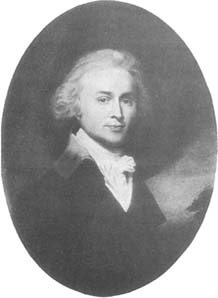
Figure 4: Heliotype. Reproduction of a Painting by John S. Copley., 1876. Edwards, Ernest. The Heliotype Process. Boston: James R. Osgood and Company, 1876. William Morris Hunt Memorial Library. Museum of Fine Arts, Boston.

Figure 5: Detail (6x) of Heliotype - Figure 4
The advertising rhetoric for this process stressed permanence and accuracy. “The pictures produced by the Heliotype process are, in effect, photographs printed in printer's ink, and independently of light: they are as permanent as engraving [photographs were not considered reliably permanent]; they require no mounting, but come from the press with clean margins [no doubt a nod to the difficulties encountered with Woodburytypes], finished, and ready for binding and framing.”14 It also emphasizes the exactness of the duplication, exploiting the growing desire for “truth” in reproduction. Heliotypy “has initiated a new departure in Art… They are not cheap or imperfect imitations, but absolutely exact copies.” The advertising continued to illustrate the importance of art for the masses, stating that its aim was “to offer to the public beautiful reproductions from the choicest and most costly works of art at the lowest possible prices…thus bring[ing] the treasures of art-galleries within the reach of all, and affording a means of art education hitherto unattainable.”15
Despite the success of these methods a metal printing base, particularly one that could be used in a rotary press, was desired by manufacturers to enable production to go from the hundreds or thousands to the tens of thousands. The ability of chromated gelatin to harden selectively made it useful as a resist in the etching of metal plates. A sheet of chromated gelatin was exposed and then processed with warm water in order to remove the soluble gelatin. The remaining gelatin was adhered to a metal plate and acted as a variable depth resist during the plate etching process. Therefore the darks on the positive were etched, thus creating an intaglio plate for printing that was a direct translation of the photographed image. (Note: a variation of this was to use a negative and then etch to create a relief plate.) This was a fast, accurate, and easy process absolutely suited to the reproduction of line images such as line drawing and engraving.
In using tonal transparencies to produce a gelatin resist, the tonal qualities of the photograph were translated into topographical variations in the gelatin. The degree of etching achieved depended upon the thickness of the gelatin resist. However the subtleties of tone that could be captured in the gelatin and subsequently in the metal plate created a smooth slopping profile that was unable to retain sufficient quantities of ink when the plate was wiped. In intaglio printing the entire plate was covered with ink. The wiping process removed the ink from the unetched or unengraved areas of the plate and only ink that was trapped in the recesses of the plate would be transferred to the paper during the printing process. The recesses had to be small with sufficiently steep edges in order to hold the ink and not allow the wiping processes to dislodge the ink. This had been the inherent problem in creating tonal images by intaglio processes. This problem was addressed in the seventeenth century with the invention of the Mezzotint process. In this technique the requisite ink pits were created mechanically with an instrument called a rocker. In the eighteenth century this problem was solved by the Aquatint process which achieved the tiny pits in the plate chemically by adhering small acid resist resin particles via a mordant to a plate prior to etching in order to achieve the fine random grain to the metal plate where the ink could become trapped. Photogravure, also known as photo-aquatint, used this technology.
A commercially viable photogravure process was invented in 1879 by Karl Klic.16 He combined a variety of concepts creating a technique that could reproduce high quality tonal images using a metal plate.
Photogravure plate preparation required the use of a resinous material applied as dry particles adhered to the metal plate by heating, or as a liquid (an aquatint mordant) to resist etching to create wells in the metal plate to supply the random fine pattern. The photographically produced gelatin resist controlled the depth of the ink wells. The prints that resulted were true intaglio prints where the tones were based on broken field and the depth of the ink. Figure 6 shows the tonal variation that could be achieved and the fine grain that is responsible for this image creation, as well as the rich, luxurious surface that was coveted for high quality reproductions.
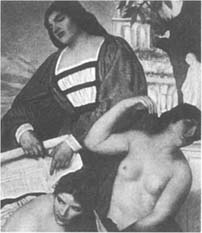
Figure 6: Photogravure. 1897. Singer, Hans W. and William Strang. Etching, Engraving and the Other Methods of Printing Pictures. London: Kegan Paul, Trench, Trübner & Co. Ltd., 1897. William Morris Hunt Memorial Library. Museum of Fine Arts, Boston.
The basic techniques of gelatin resist and the need for grain was understood early on by many photographers and manufacturers. W. H. F. Talbot used linen screens and aquatint mordant in an attempt to impart grain to his plates. Figure 7 shows an example of a print by Talbot. These early attempts were called photoglyphs and patented by Talbot in 1852.17 It is essentially the same process as photogravure, therefore the technique is often called the Talbot-Klic process. All of these early processes had difficulties in achieving photographic quality prints. This was due less to the printing technology and more with the fact that a good negative was not available. To create a gelatin surface that had an adequate range of tones, a dense negative with good tonal variation had to be used. The advances in photo-chemistry that began in the late 1870s allowed for chromated gelatin to be more fully exploited. The biggest change in the late 1870s manifested itself in the availability of factory-sensitized gelatin coated glass plates, also known as dry gelatin plates. These were first imported to the United States from Holland in 1879.18 This innovation was responsible for a phenomenal change in the availability of photography to the general public because it eliminated the need for on site coating with wet photosensitive materials during the picture taking process. This accessibility aided in furthering the taste for photographically produced reproductions which became the expected standard for receiving visual information. Chemically the great advance of dry gelatin plates was their increased sensitivity to light which was attributed to the minute amounts of catalytic sulfur that was found in the gelatin and the small size of the silver particles used. This combination allowed for the production of much denser negatives with subtle tonal variation. By comparing the Talbot mid-nineteenth century photogravure (Figure 7) with a photogravure of 1893 by Cosmos (Figure 8) the role of the negative in the creation of tones can be seen. The photogravure process was still labor intensive. In addition to all the resist creation and etching steps, the plate almost always had to be worked by hand after etching in order to obtain clear, dark lines. The fineness and irregularity of the aquatint grain also necessitated that the plate be inked and wiped by hand. In order to further mechanize the process, a relief plate with a regular grain was invented. This was known as half-tone engraving, half-tone block printing, or half-tone relief printing. The half-tone plate process was invented in the 1860s by Baron F. W. von Egloffstein19 and first used in a newspaper on March 2, 1880 in the New York Daily Graphic.20
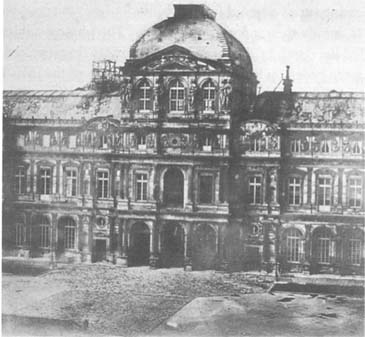
Figure 7: Photoglyph (early photogravure). William Henry Fox Talbot, English, 1800–1877. The Tuileries, 1855–1877. Anonymous loan to Museum of Fine Arts, Boston. T.413.1.1991
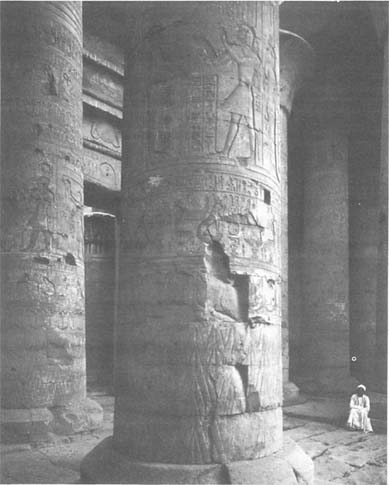
Figure 8: Photogravure. Cosmos, 19th c. Great Hall at the Temple at Edfou. 1893. Anonymous loan to Museum of Fine Arts, Boston. T.408.1.1992.
Half-tone relief rapidly became the dominant process for magazine, newspaper, and book illustration. It eliminated the “personal interpretation”21 that was seen in wood-engraving, the process that half-tone was usurping.22 A page from Anthony's Photographic Bulletin from 1895 (Figure 9) promoted the “accuracy” aspect of photographically-produced images.
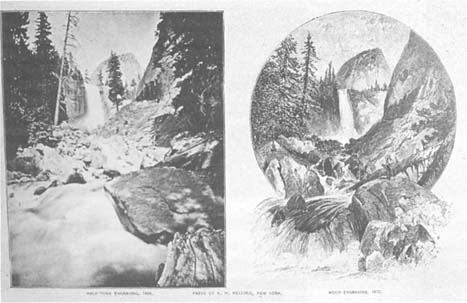
Figure 9: From Anthony's Photographic Bulletin, 1895. William Morris Hunt Memorial Library. Museum of Fine Arts, Boston.
This desire for direct copies (not translations) was exploited in an advertisement for the Meisenbach Company.23 It emphasized the versatile, permanent, accurate, and economical nature of half-tone and pointed out the deleterious effects of the “artist-engraver” on images warning “Oh wait till you see how the engraver will spoil it.” This advertisement also mentioned the use of the half-tone process by the British Museum to give it the cachet of being used to reproduce art. As with other processes, the existing photo-chemical technology for negative production did not allow for clean crisp tonal images and therefore half-tone did not become a wide spread process until 1886. In this process a screen of lines (usually etched in glass) or more commonly a cross of two line sets was superimposed with the negative when creating the resist for etching, thereby creating a grain in the plate photographically.24
Although the advertising rhetoric stressed that half-tone images were created purely mechanically, manual manipulation was often employed. An example of this can be seen in figures 10–15 which show an untouched half-tone print and two prints from reworked plates. The need to rework the plate came from a desire for a certain aesthetic. The reworking reduced the appearance of the dot structure thereby lessening the mechanical nature of the print. It also imparted some of the aesthetics of wood-engraving which were still prevalent. In addition because the film used in this period was unable to capture the entire visible spectrum25 it created pictures with a false tonal balance, a problem which reworking could partially remedy. This lack of sensitivity in film was well known and many artists, such as Frederic Remington, who created works expressedly for reproduction, often restricted their palettes to shades of purples and blues so that their images would be reproduced with tonal accuracy. Manufacturers wanted a more broadly sensitive film to decrease the need for manual intervention in the production of prints where a reproduction specific original was not available. The benefit was clearly understood “There could be no greater triumph of science combined with art than this, that (without the knowledge of the artist-engraver, who translated colour into black and white) a photograph should be produced, with a full balance of nature's light and shade unmarred by any incongruity due to misrepresentation of nature's colouring, and a plate or stone so prepared as to insure thousands of identical copies being printed in permanent carbon ink.”26 The inability of film to capture tones accurately and evenly also became a criticism of photography because in this way it lacked the “truth” (truth of color representation) that was proclaimed as the raison d'ětre of photographic reproduction.
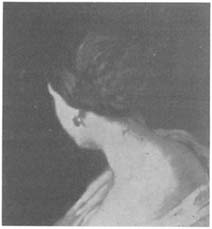
Figure 10: Print from untouched half-tone block.
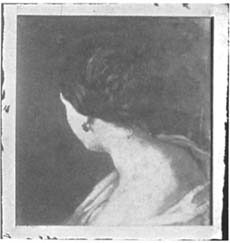
Figure 11: Print from a burnished half-tone block.
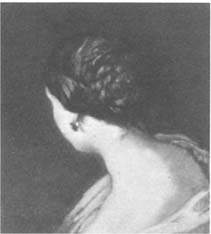
Figure 12: Print from a half-tone block after retouching with burnisher and graver.
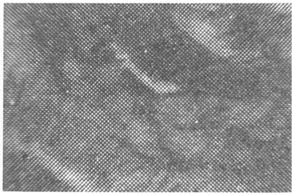
Figure 13: detail (6x)
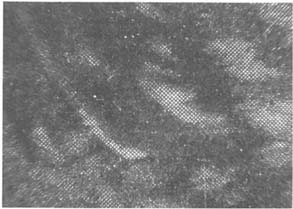
Figure 14: detail (6x)
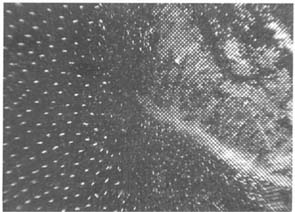
Figure 15: detail (6x)
The regularized screen pattern was also applied to the intaglio print process and produced the Rotogravure.27 This name was given because now the intaglio process could be printed in a mechanized press. This became possible because the scraper blade, also called the doctor blade, had a uniform surface to bear on and wipe off the excessive ink, thereby mechanizing the entire process.
Gravure and half-tone are technologically very similar but the gravure processes were superior for high quality reproductions. Half-tone did not have the richness in tone and luxurious surface of intaglio prints. The intaglio process created tone not only by breaking the print surface into small areas that the eye could resolve into grey tones, but also some variations caused by the variable depth of ink. Gravure could more easily produce areas of pure white because the highs of the plate remained protected and uninked, whereas in the half-tone the protected highs were the interstices of the screen and therefore inked even in the highlights of the image (figures 16 and 17). Although the mechanical grains became decreased in size due to the etching process, they still appeared.
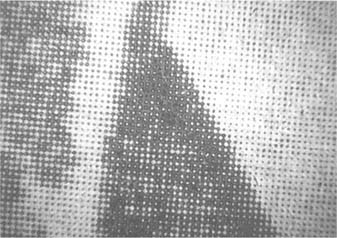
Figure 16: Detail of a photogravure (6x). Museum of Fine Arts, Boston, Bequest of Sylvester Rosa Koehler, Apparatus.
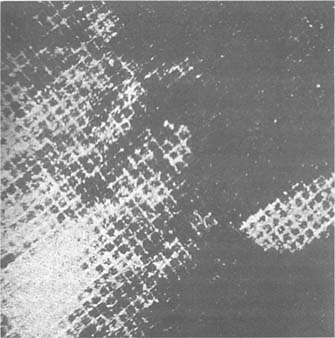
Figure 17: Detail of half-tone relief print (6x). Museum of Fine Arts, Boston, Bequest of Sylvester Rosa Koehler, Apparatus.
The relief block also required a very smooth surface for printing in order to create crisp images; calendered, supercalendered, or coated papers were used.28 This glossy paper is often seen in the separate illustrated signature in many books. The regular repeating patterns of grain were also more visible in half-tone and therefore the eye could discern the mechanical basis of the image.
Gravure was also associated with an artistic tradition and artists such as Muybridge, Stieglitz, and Sargent chose to have their works reproduced in gravure. The role of the artist in the reproduction processes generally produced higher quality reproductions, made with greater care and attention. Although the praises of these reproductions were sung, as in Art Amateur, offering advice to a “New York Bachelor” that “…with a few hundred dollars to spend on pictures for the wall of his room…[It] would be best for him to buy engravings or photogravures,”29 they were also criticized “Anybody who claims that a photograph or a photogravure gives him any artistic pleasure, is his own dupe.”30
Processes continued to change rapidly. True photography became a more reliable medium in terms of stability of the prints, ability and ease in image capture, and production of multiple copies with consistency. However, because of cost and quantity factors, photomechanical processes continued to be invented, refined and heavily used. Even though photographic techniques came to dominate image reproduction, the contributions of the lithographic processes can not be overlooked and lithography was still frequently employed. Although many mechanized replication processes are used primarily by industry, the interplay between artists, photographers, inventors, and manufacturers continues to be essential in the development of techniques for image creation both for art and reproduction.
1. Sally Ann McMurry, Families and Farmhouses in Nineteenth-century America: Vernacular Design and Social Change, New York: Oxford University Press, 1988, p. 100.
2. Ibid, p. 136.
3. P. Marzio, The Democratic Art: Pictures for a Nineteenth Century America, Boston, 1979, p. 201.
4. Review of W. J. Linton, Some Practical Hints on Wood Engraving, for the Instruction of Review and the Public, Boston/New York, 1879 in Journal of American Art, vol. 1 division 2, p. 124.
5. Ibid.
6. Miles Orvell. The Real Thing: Imitation and Authenticity in American Culture, 1880–1940. Chapel Hill and London, 1989, p. 78.
7. Joseph Nicephore Niepce began experimenting with light sensitive resins in the early 19th century. The first photomechanical image produced was his well known copy of an engraving by Isaac Briot of Cardinal d'Amboise in 1824. Boston Museum of Fine Arts, The Reproductive Arts from the xv Century to the Present Time with Special References to The Photo-mechanical Processes, Exhibition Catalogue, January 8 to March 6, 1892. Boston: Alfred Mudge & son, 1892, p. 55. Many other methods for photographically reproducing line work followed.
8. Potassium bichromate was most often used. However ammonium bichromate was employed when a more sensitive gelatin was required and cost was not a factor. The first experiments using the bichromate-gelatin phenomenon were published by Mungo Ponton in 1839. Boston Museum of Fine Arts, The Reproductive Arts from the xv Century to the Present Time with Special References to The Photo-mechanical Processes, Exhibition Catalogue, 1892, p. 52.
9. Woodbury patented his method in 1864. William Welling, Photography in America: The Formative Years, 1839–1900, Albuquerque, 1978, p. 202.
10. Boston Museum of Fine Arts, The Reproductive Arts from the xv Century to the Present Time with Special References to The Photo-mechanical Processes, Exhibition Catalogue, 1892, p. 55 and Welling, p. 236.
11. Boston Museum of Fine Arts, The Reproductive Arts from the xv Century to the Present Time with Special References to The Photo-mechanical Processes, Exhibition Catalogue, p. 74.
12. Introduced by Joseph Albert. Luis Nadeau, Encyclopedia of Printing, Photographic and Photomechanical Processes, New Brunswick, 1994, p. 73.
13. Ernest Edwards, The Heliotype Process, Boston, 1876.
14. Ibid, p. 12
15. Ibid, p. 13.
16. Nadeau, p. 372.
17. 1854 according to Boston Museum of Fine Arts. The Reproductive Arts from the xv Century to the Present Time with Special References to The Photo-mechanical Processes. Exhibition Catalogue, 1892, p. 55. Also by T.S. Barber, Photo Engraving, Electrotyping and Stereotyping, volume IV of W. M. Atkins, general ed., The Art and Practice of Printing: A Work in Six Volumes, London, 1933, p. 7.
18. Reese V. Jenkins, Image and Enterprise: Technology and the American Photographic Industry 1839–1925, Baltimore/London, 1975, p. 77.
19. Baron F. W. von Egloffstein began experiments in 1861. Welling, p. 177.
20. Welling, p. 263.
21. Barber, pp. 1–7.
22. Harold Curwen. Processes of Graphic Reproduction in Printing, London, 1934, p. 30.
23. Meisenbach patented his half-tone process in 1881. Barber, p. 7. The Meisenbach advertisement is from 1885
24. Half-tone screens were also created with curved and irregular patterns. The irregular screens were called Hatte, or Elgar screens, which simulated the random grain of photogravure. Curwen, pp. 110–113.
25. Before 1886 commercially available film was sensitive only to the purple/blue area of visible light. In 1882 Orthochromatic film, which had a further sensitivity allowing for image capture into the green/ yellow area of visible light, was invented. This type of film was imported into the United States in 1886 and it is not a coincidence that this corresponds to the date of the proliferation of half-tone photomechanical images. Film that could capture the full visible spectrum called Panchromatic, was not invented until 1884. Its commercial use began in 1901 and was introduced to the mass market in 1923. Dates are approximate (from Nadeau, p. 356) and dependant upon place of use.
26. John Whitfield Harland, The Printing Arts: The Theory, Practice and Process of Engraving, Lithography and Printing, New York/London, 1892, p. 123.
27. Also known as Rembrandt Photogravure, invented by Karl Klic in 1895. Nadeau, p. 414.
28. Estelle Jussim, Prints and Visual Communication in the Graphic Arts, New York/London, 1974, p. 129 and Anthony's Photographic Bulletin, January 1895.
29. “Correspondence,” Art Amateur, September 1881, p. 68.
30. Hans W. Singer and William Strang, Etching, Engraving and the Other Methods of Printings Pictures, London, 1897, p. 187.
* contains specimens of various printing processes.
A Journal of Popular Art, quarterly 1868–1869.
Barber, T. S. 1933. Photo Engraving, Electrotyping and Stereotyping. Volume IV of Atkins, W. M. general ed., The Art and Practice of Printing: A Work in Six Volumes, London: Sir Isaac Pitman and Sons Ltd.
Boston Museum of Fine Arts. 1892. The Reproductive Arts from the xv Century to the Present Time with Special References to The Photo-mechanical Processes. Exhibition Catalogue, January 8 to March 6, 1892. Boston: Alfred Mudge & son.
“Bruce Museum Showing Photogravure of Work by John Singer Sargent” New York Times, 6 February 1994. Arts Section.
Brunner, Felix. 1972. A Handbook of Graphic Reproduction Processes. Switzerland: Arthun Niggli, Ltd.
Bunnell, Peter C. 1973. Nonsilver Printing Processes: Four selections, 1886–1927. New York: Arno Press.
Coe, Brian and Mark Harworth-Booth. 1983 A Guide to Early Photographic Processes. London: The Victoria and Albert Museum in association with the Hurtwood Press.
Cook, Clarence. “Beds and Tables, Stools and Candlesticks,” Scribner's Monthly, Vol. xiii, April 1877: 656–658.
“Correspondence,” Art Amateur, September 1881: 68.
Curtis and Cameron 1897. Reproductions of Notable Painting, Publically and Privately Owed in America: also the Mural Decoration of New Library of Congress and the Boston Public Library. Boston: Curtis and Company.
Curwen, Harold. 1934. Processes of Graphic Reproduction in Printing. London: Faber and Faber.
Denison, Herbert. 1895. A Treatsie on Photogravure in Intaglio by the Talbot-Klic Process. London: Iliffe & son. Reprinted. 1974. Rochester: The Visual Studies Reprint Series.
Edwards, Ernest. 1876. The Heliotype Process. Boston: James R. Osgood and Company*- Much of this is taken from an address intitled “Photography in the Printing Press: Being a description of the workings of the heliotype process.” Presented December 12, 1872 at The Society of Arts at The Massachusetts Institute of Technology.
Elson and Company. 1912. The Making and Printing of a Photogravure: An Interesting Guide to Uses of Plates and Papers. Advertising leaflet.*
Gascoigne, Bamber. 1986. How to Identify Prints. London: Thames and Hudson.
“Housekeeping Economy,” Rural Affairs 1870–1872: 200–209.
Ivins, William. 1953. Prints and Visual Communication Cambridge: Harvard University Press.
Jenkins, Reese V. 1975. Images and Enterprise: Technology and the American Photographic Industry 1839–1925. Baltimore and London: The John Hopkins University Press.
Jussim, Estelle. 1974. Visual Communication and the Graphic Arts. New York/London: R. R. Bowder and Co.
Lietze, Ernst. 1888. Modern Heliographic Processes. New York: D. van Nostrand company.*
Marzio, Peter C. 1979. The Democratic Art: Pictures for a 19th-century America. Boston: David R. Godine.
Mckinstry, E. Richard. 1987. Trade Catalogues at Winterthur: A Guide to the Literature on Merchandizing, 1750–1980. New York and London: Garland Publishing, Inc.
McMurry, Sally Ann. 1988. Families and Farmhouses in Nineteenth-century America: Vernacular Design and Social Change. New York: Oxford University Press.
Nadeau, Luis. 1994. Encyclopedia of Printing, Photographic and Photomechanical Processes. New Brunswick.
Orvell, Miles. 1989. The Real Thing: Imitation and Authenticity in American Culture, 1880–1940. Chapel Hill and London: The University of North Carolina Press.
Pettit, James Sumner. 1884. Modern Reproduction Graphic Processes. New York: D. Van Nostrand.
Poortenaar, Jan. 1934. The Technique of Prints and Art Reproduction Processes. London: John Lane.*
Singer, Hans W. and William Strang. 1897. Etching, Engraving and the Other Methods of Printing Pictures. London: Kegan Paul, Trench, Trübner & Co. Ltd.*
Welling, William. 1978. Photography in America: The Formative Years, 1839–1900. Albuquerque: University of New Mexico Press.
Wright, Gwendolync, 1980. Moralism and the Model Home: Domestic Architecture and Cultural Conflict in Chicago, 1873–1913. Chicago: Univeristy of Chicago Press.
Many thanks to Roy Perkinson, Alison Luxner, and the Department of Prints, Drawings, and Photographs at the Museum of Fine Arts, Boston.